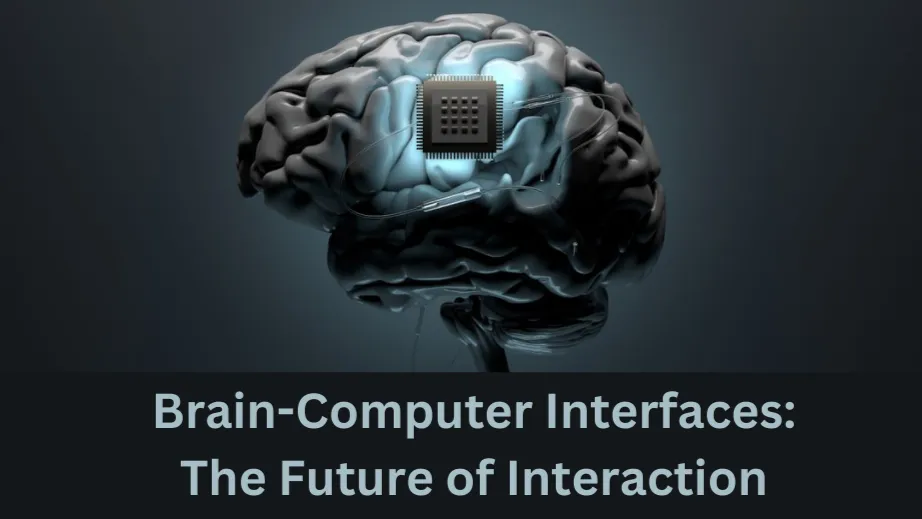Brain-Computer Interfaces: The Future of Human-Tech Interaction

Understanding Brain Computer Interfaces
Brain computer interfaces (BCIs) refer to systems that establish a direct connection between the brain and digital devices. These systems interpret neural signals and translate them into commands, allowing users to control computers, prosthetic limbs, and even smart home devices. The concept of human brain interface interaction has fascinated scientists for decades, leading to significant advancements in neurotechnology.
How Brain Computer Interfaces Work
Brain computer interface devices function by detecting electrical signals from the brain, analyzing them, and converting them into digital outputs. The primary components include:
Signal Acquisition: Electrodes capture neural activity, either invasively (implanted electrodes) or non-invasively (EEG caps or external sensors).
Data Processing: Advanced algorithms analyze brain signals to identify patterns and convert them into actionable commands.
Output Execution: Commands are sent to connected devices, such as prosthetics, wheelchairs, or computer systems, allowing users to perform tasks without physical movement.
These steps enable brain interface technology to control applications such as robotic arms, virtual keyboards, and gaming systems.
Applications of Brain Computer Interfaces
Healthcare
One of the most impactful applications of brain computer interfaces is in the medical field. Patients suffering from paralysis or neurological disorders benefit from brain computer interface devices that restore mobility and communication.
Prosthetic Control: BCI-enabled prosthetics respond to brain signals, providing a natural method of movement for amputees.
Speech Assistance: Devices translate thoughts into speech, helping individuals with speech disabilities communicate more effectively.
Neurotherapy: BCIs aid in cognitive rehabilitation, helping patients recover from strokes or traumatic brain injuries.
Mental Health Treatment: BCIs are being explored for use in treating depression and anxiety by regulating neural activity.
Spinal Cord Injury Recovery: Scientists are researching BCIs to bridge damaged neural pathways, potentially restoring movement in paralyzed individuals.
Gaming and Virtual Reality
The gaming industry is leveraging brain interface technology to create immersive experiences. Players can control in-game actions using their thoughts, leading to enhanced human brain interface interaction.
Mind-Controlled Games: Gamers can navigate virtual environments with their minds, enhancing gameplay interaction.
Augmented Reality Enhancements: BCIs enhance immersive simulations, allowing real-time control of virtual objects.
Adaptive Difficulty Levels: Games adjust based on players' cognitive responses, making gameplay more engaging and personalized.
Immersive Haptic Feedback: Integration with BCIs can enable real-time sensory feedback, enhancing the feeling of presence in virtual worlds.
Multiplayer Thought Communication: Future developments may allow players to interact using brain signals instead of voice or text communication.
Artificial Intelligence and Machine Learning
AI-driven brain computer interface devices enhance the capabilities of smart systems, allowing seamless human brain interface interaction. This integration paves the way for AI-driven assistants that adapt to human thought patterns.
Cognitive Computing: AI-enabled BCIs predict user intentions and perform tasks automatically.
Brainwave Authentication: Secure systems based on unique brain activity signatures, enhancing cybersecurity.
Smart Home Integration: Control smart devices via neural commands, improving accessibility for disabled individuals.
Emotion Detection AI: BCIs could be used to analyze emotions and provide real-time AI-driven mental health support.
Workplace Productivity: Brain-computer interfaces may be used in business environments to streamline workflows and improve efficiency.
Challenges in Brain Computer Interfaces Development
Despite promising advancements, several challenges hinder widespread adoption of brain interface technologies:
Signal Precision: Brain signals are complex and difficult to interpret accurately, requiring advancements in machine learning.
Device Invasiveness: Some BCIs require surgical implantation, limiting widespread adoption.
Ethical Concerns: Privacy issues arise with direct brain-data access, raising ethical questions about mind-reading technology.
Cost and Accessibility: High costs limit accessibility, requiring further research to make BCIs affordable for broader populations.
User Training and Adaptation: Many BCI systems require extensive training to achieve accuracy, slowing down widespread adoption.
Data Security Risks: As brain interfaces collect neural data, there is a risk of hacking or misuse of sensitive information.
The Future of Human Brain Interface Interaction
As research progresses, brain computer interfaces are expected to become more sophisticated, non-invasive, and accessible. Future developments may include:
Wireless BCIs: Eliminating the need for physical connections, making BCIs more user-friendly.
Enhanced AI Integration: Improving signal processing accuracy, allowing BCIs to understand complex thoughts and emotions.
Widespread Accessibility: Making BCIs available to the general public for applications in gaming, healthcare, and productivity.
Real-Time Thought Translation: Developing systems capable of real-time thought-to-text translation, allowing seamless communication.
Brain-to-Brain Communication: Exploring ways for humans to communicate directly via brain signals, potentially revolutionizing interaction.
Neuroethics and Regulation: Governments and institutions will need to develop policies to address privacy, security, and ethical concerns related to BCIs.
Augmenting Human Intelligence: Some researchers envision BCIs enhancing cognitive abilities, potentially leading to superhuman intelligence.
Conclusion
The advancement of brain computer interface devices is shaping the future of human brain interface interaction. As this technology evolves, it will unlock new possibilities in healthcare, gaming, AI, and beyond, revolutionizing the way humans interact with machines. While challenges remain, continued research and innovation will drive the development of more refined, ethical, and accessible BCI solutions.